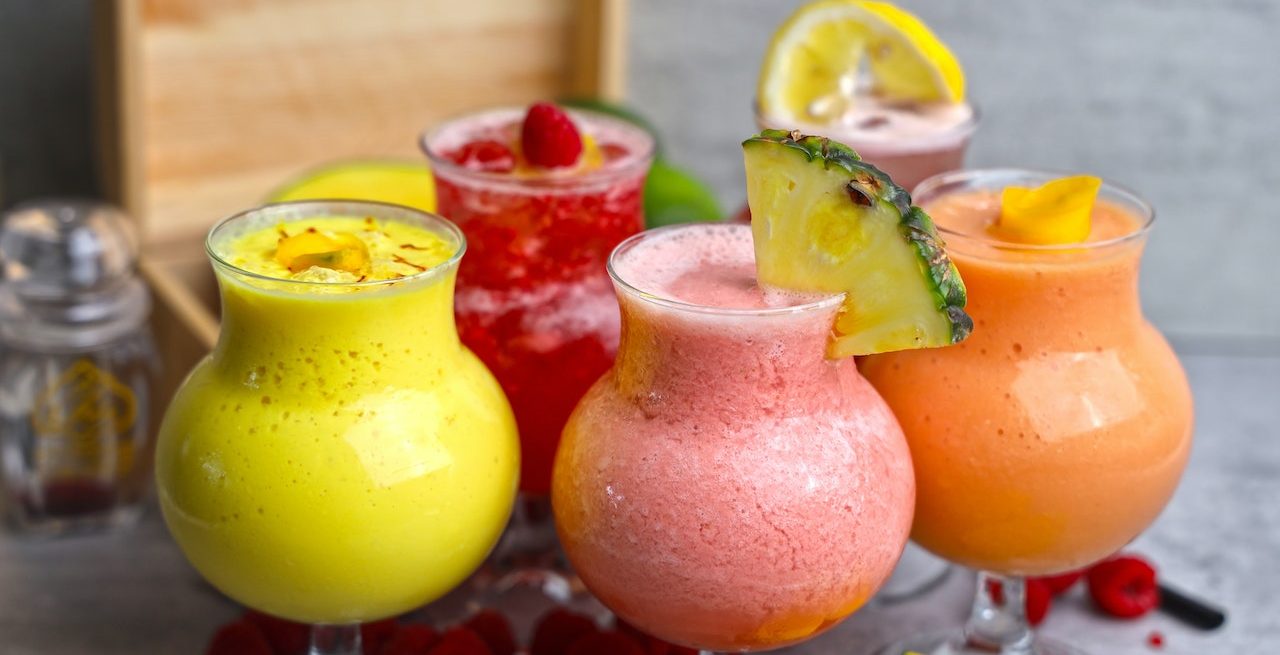Meeting Today’s Demand for Less Alcohol
4 Min Read By H. Joseph Ehrmann
This year will likely be known as the pivotal year for going beyond Dry January and Sober October (though I'm sure the press and Instagram will still love those opportunities to focus). It is truly the breakthrough year for non-alcoholic "adult drinks" served behind the bar, sold in stores, and developed in labs, kitchens and bars at a breakneck pace. It’s all over the industry news and bleeding into the public domain, but is it right for your bar?
I never thought that in my 20th year of business at ELIXIR I would finally see the shift that is currently happening in today’s drinking circles. I, like many others I would assume, had a bit of an epiphany about the need for flavorful, complex, and “adult” beverages in the modern bar scene when my partner became pregnant and stopped drinking alcohol in 2012. She was never a soft drink kind of girl, and was rather bored with most other common simple and unoriginal options, so she asked me to create drinks at home that would be satisfying and delicious, and have them at the bar so she could still visit and not be frustrated. It gave me not only the motivation to explore this need, but an on-going platform to do so that has not ended since that time, as she never returned to alcohol and our daughter has developed quite the palate and desire for delicious beverages.
I put out my first "Low Impact Menu" in June 2013 featuring low-ABV drinks like a Brancamenta Julep, Sutton & Soda (a local dry vermouth), a Kalimotxo, and just one non-alcoholic drink, a Matcha Mint Lemonade. It barely sold anything, but we kept doing it, switching up the drinks and playing with flavors and textures as much as we did on our seasonal cocktail menu. Over time, not much changed outside of the January and October peaks of customer inquiries for “sober curious” exploration…until last year. As the onslaught of “non-alcoholic spirits” began, and the press ate it up, my team continued to develop new ideas and play with many of the new products. Today, the ELIXIR Low Impact menu is about eight percent of sales and growing. I’m pleasantly surprised with that growth and consistent performance, so we continue to work on improvements with every menu release. And you should too.
A non-alcoholic drink should be every bit as compelling as an alcoholic drink, which is to say you have to pay attention to the details when constructing one in order to build a complete picture.
What my partner particularly pointed out in those momentous months of 2012 was what should have been, and still should be, obvious (especially to me). A non-alcoholic drink should be every bit as compelling as an alcoholic drink, which is to say you have to pay attention to the details when constructing one in order to build a complete picture. Remember that the same attributes of a great cocktail go into a great “mocktail”.
Just as in the dating scene, appearances are important. They not only initiate attraction, they hold your attention. Color, glassware, ice, and garnish all create that drink that commands a “What’s that?” from across the room, but eloquent and inviting descriptions on a menu that is not demeaning, overly-punny, nor divisive draw the consumer into the narrative in their hands. Be a good visual artist, but know how to narrate. “Mocktail” can be a divisive word for some, with options like “Low or No ABV”, “Non-Alc”, and “Zero Proof” being less so. Find the words that fit your bar vibe while commanding some respect. And, of course, make them want to order the drinks.
The culinary side can’t slack either. You want flavor, texture, and aroma to show up for the performance and must be in balance if the drink is to be a seller. This is where the biggest challenge comes. The flavor amplification of alcohol is not there to help you. The flavor and textural complexities derived from a multitude of fermentation, distillation, and aging techniques are not lending their nuances to your brilliant creations. I have had a career built on studying these things, doing consulting projects for tea companies, developing beverage concepts for alternative milks, energy drinks and various forms of water products, and visiting distilleries all over the world, which all aided me in exploring these ins and outs. You can get down and dirty with new age techniques like finding texture from proteins and starches, botanical complexity from various traditions that have been around for generations, or delving deep into the sources and process of carbonation and effervescence. Or…finally…you can lean on the brilliance of others.
Today’s booming “NA” market for both individual ingredients and packaged “lightning in a bottle” give you a lot of options to make playing in the modern non-alcoholic drink market quite easy.
There are great mixers to explore whose quality level was unthinkable just five to ten years ago; from truly fresh, refrigerated, juice-driven mixers that eliminate much of the inconsistency, spoilage, and labor cost of a DIY approach, to the uniquely and creatively flavored carbonated mixers and ready-to-drink “sodas” to that can be served on their own or used as both texture and flavor modifiers. There are high quality, shelf stable syrups that are no longer filled with the neon colors and unnecessary artificial garbage ingredients of the last fifty years. There are even non-alcoholic bitters. And of course, there are lots of smart people figuring out how to make complex, bottled products meant to replace or stand in for the unique flavors and profiles of the spirits we have come to know and love, but are maybe now stepping away from for various reasons, be it permanently, for a short while, or just tonight.
Don’t ignore the stats, because this trend just became a norm. It’s not just the young and it’s not that everyone is given up drinking. According to the IWSR 78 percent of no- and low-alcohol consumers also drink full-strength alcohol and only 18 percent refrain from drinking alcohol altogether. In the end, the only limitation to your ability to make money on your menu by selling non-alcoholic drinks alongside your alcoholic ones, is your lack of research, experimentation, and effort. So try the options, make a plan, and get in on the profitable new items your menus, and your customers, need.


